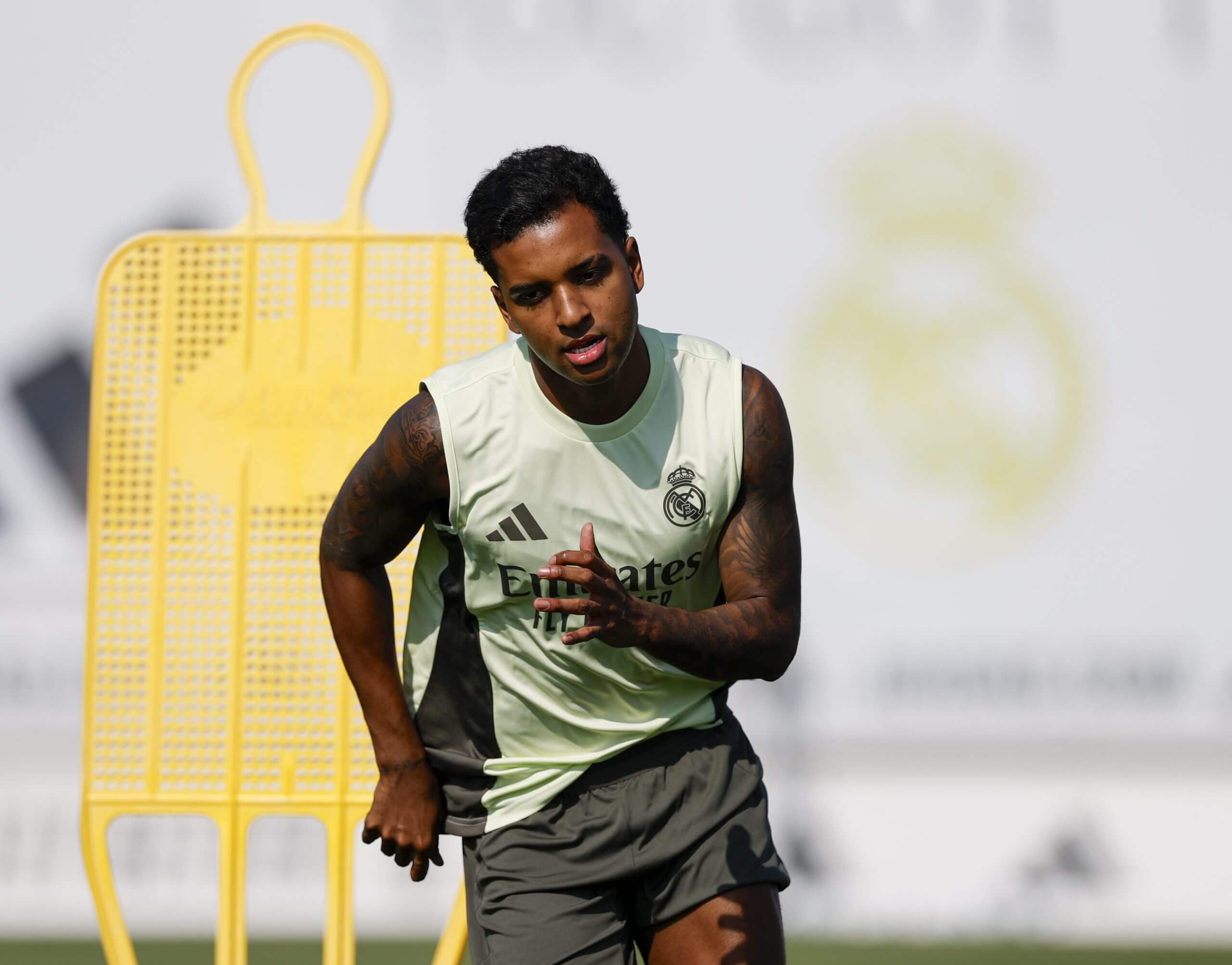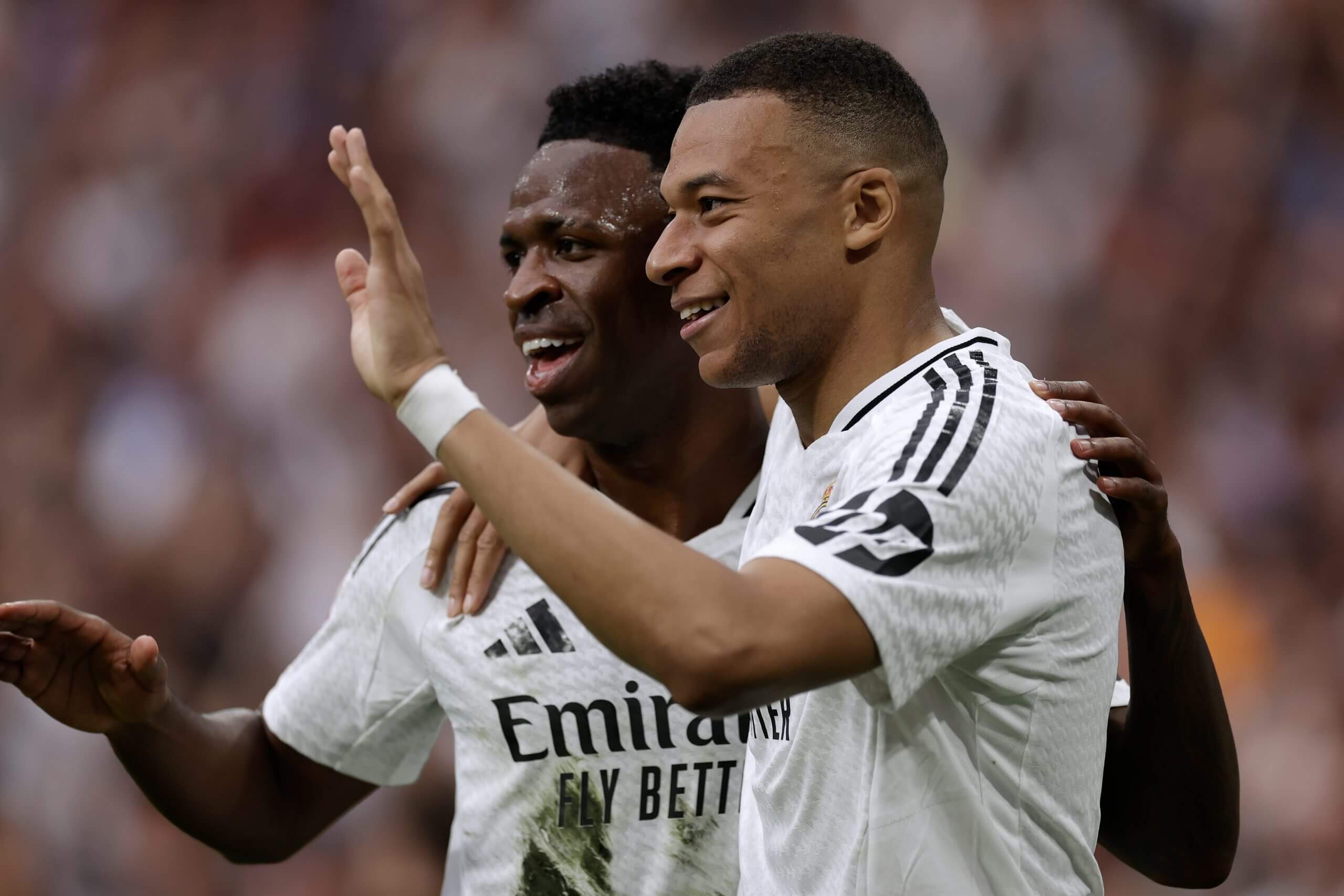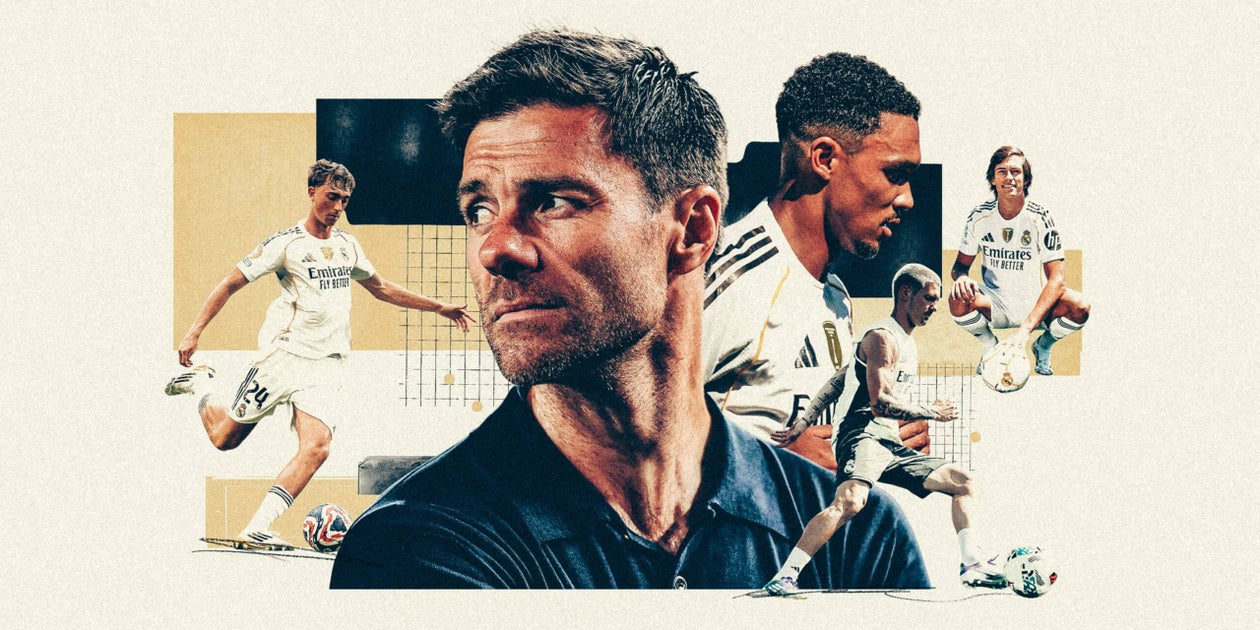Real Madrid’s La Liga opener against Osasuna later today marks the latest key moment in the club’s exciting restart with Xabi Alonso as their new manager.
Last season was a deeply discouraging one for everyone at the Bernabeu, with no major trophies won and regular disappointments leading to Carlo Ancelotti’s exit as coach.
In response, club president Florentino Perez hired Alonso and sanctioned around €180million (£155m; $210.5m) to be spent on new players, including defenders Dean Huijsen, Alvaro Carreras and Trent Alexander-Arnold, along with exciting young Argentine playmaker Franco Mastantuono.
Alonso’s attempts to revitalise a team which appeared moribund by the end of Ancelotti’s time as coach actually began at the Club World Cup, a tournament that offered Madridistas some optimistic signs but also reinforced more painful realities.
Here, informed by numerous sources working at Madrid or closely connected to the club (all wished to speak anonymously to protect relationships), is the story of Real Madrid’s summer rebuild.
Madrid’s squad planning for 2025-26 began well before Ancelotti’s departure to take up the Brazil job at the end of May.
Some of the Italian’s long-held concerns were shown up over last term — especially during heavy and embarrassing defeats by Arsenal in the Champions League quarter-finals (5-1 on aggregate) and Barcelona domestically (16 goals conceded in four defeats across three competitions, including the Copa del Rey final).
Alonso, 43, played under Ancelotti at Madrid and Bayern Munich and understood his former manager’s views on the team’s strengths and weaknesses. Before officially taking over on May 26, Alonso also canvassed views from friends working at the club, including his former team-mate Alvaro Arbeloa (now coaching Real Madrid Castilla) and Luis Llopis (staying as first-team goalkeeper coach).
From his time as a player, Alonso knows well how Madrid works under Perez. The 78-year-old remains the ultimate decision maker, signing off on all big moves. Other key figures include chief scout Juni Calafat, who identifies targets (especially younger players), prepares detailed reports, and builds relationships with agents and families. Long-serving director general Jose Angel Sanchez, meanwhile, is the link from those below up to Perez, and conducts all negotiations.
Ancelotti’s input to transfer planning in recent years had been limited, which frustrated the Italian at times. Sources say Alonso has been much more closely involved in identifying targets and persuading them to join. Others argue that everyone up to Perez has finally come to share many of Ancelotti’s impressions and accepted that significant investment was required, particularly in defence.
Madrid paid Liverpool €10m to have Alexander-Arnold available in the United States (Jan Hetfleisch/Getty Images)
The impulse to sign Alexander-Arnold from Liverpool dated from well before Ancelotti left, with the England international’s availability seen by the club as a ‘market opportunity’. The decision to pay €10million so the English right-back could play the Club World Cup also fit the hierarchy’s idea of using that tournament to move on from last season (Alonso’s appointment ahead of that competition was also similarly motivated).
Alonso was more involved in moves for ex-Bournemouth centre-half Huijsen and former Benfica left-back Carreras. Both players fit with his plan to move from Ancelotti’s deeper defensive block and introduce a more proactive, high-pressing tactical approach.
Initial reservations over paying Huijsen’s £50m (€58m, $67.5m) exit clause were overcome, especially with just one other fit centre-half — 22-year-old back-up Raul Asencio — available in the build-up to the Club World Cup. Madrid’s sporting directors and coach also agreed on Carreras — a Madrid youth player from 2017-2020 — but a deal could not be done in time for the tournament.
Decisions over players out of contract this summer were also ultimately down to the club hierarchy. Jesus Vallejo was always set to leave, while ultimately neither of Alonso’s former team-mates Luka Modric and Lucas Vazquez were offered new deals.
The Club World Cup provided Alonso with a big challenge. He had to get to know his new squad, build an all-new defence, while introducing the compact team organisation, quick counter-pressing and rehearsed patterns of play which had worked so well for him at previous club Bayer Leverkusen.
During training in Miami, the Basque manager was a constant presence, on players’ shoulders feeding the ball into exercises, or teeing them up to shoot during finishing drills. A full month together in the United States was also useful in establishing new personal relationships with his squad.
“Spending so much time together, at breakfast, lunch and dinner, helps build those bonds of confidence which are so important for the future,” Alonso said in a press conference during the tournament.
The fresh approach was symbolised by fitness coach Ismael Camenforte Lopez combining physical preparation with practising particular match situations, different from predecessor Antonio Pintus’ more old-school, hard-running methods. Another innovation was the recording of each session using drones, and having analysts produce short but detailed videos for Alonso to show players exactly what he wanted from them.
“The main objective was to change the dynamics,” a coaching staff source told The Athletic. “With more videos, more personalisation, more detailed analysis and more focus on things like punctuality and intensity.”
One of the novelties this year with Xabi Alonso and his staff: training sessions are recorded with a drone@TheAthleticFC pic.twitter.com/hqDk2lqPlq
— Mario Cortegana (@MarioCortegana) June 25, 2025
Individual and collective performances improved as the tournament progressed, at least until the semi-final. Ancelotti’s 4-3-3 shape was mostly maintained, but a three-man defence was also trialled. Alonso’s positive influence on the team was most clearly on show during knockout victories against Juventus (1-0) and Borussia Dortmund (3-2). The new coach’s in-game tactical tweaks impressed with key players Jude Bellingham, Federico Valverde, Aurelien Tchouameni and Alexander-Arnold used in different positions in different moments.
More trust was also shown in younger players. Last season’s benchwarmer Arda Guler became a regular starter, while 21-year-old forward Gonzalo Garcia made the XI ahead of Rodrygo and Brahim Diaz. Both decisions paid off, with Guler impressing in a new deeper playmaking role, and Gonzalo scoring four goals in six games in the U.S..
The 4-0 semi-final defeat by Paris Saint-Germain was embarrassing and hurt a lot, but it also brought useful lessons for Alonso and the club hierarchy. Awful individual errors by Asencio and Antonio Rudiger showed more defenders are still needed. A 4-3-3 shape with Kylian Mbappe and Vinicius Junior on the wings was ruthlessly exploited and punished by Luis Enrique’s superbly organised Champions League winners.
“There’s a lot of room for improvement,” Alonso said in his post-match press conference. “It hurts today, but it will also serve us as a guide for where we need to improve.”
After the Club World Cup, Madrid’s players flew off on holidays, but back at the Bernabeu, the planning continued. Alonso was also in close contact with club figures during his holidays in his home province of Gipuzkoa.
Promising Argentina international Mastantuono was soon to arrive, an investment by the club of €63.2m and a signing in which Alonso was closely involved. It was also decided to return for Carreras to upgrade at left-back. A deal with Benfica was closed for €50m, with a separate transfer agreed for 21-year-old Castilla left-back Rafael Obrador to go the opposite way.
Sources said the Madrid hierarchy were still open in theory to more signings, while noting that many of Alonso’s requests had already been granted, and that the squad already had 24 senior players (out of the maximum of 25).

Rodrygo in Real Madrid training earlier this month (Pedro Castillo/Real Madrid via Getty Images)
A big issue with any further changes, though, was that none of the first team wanted to leave. Spanish newspaper Marca reflected the situation on August 1 with a front cover that portrayed nine Madrid players — Andriy Lunin, Fran Garcia, Ferland Mendy, David Alaba, Rudiger, Dani Ceballos, Garcia, Endrick and Rodrygo. None were central to Alonso’s plans but all wanted to stay.
Rodrygo was the obvious one who could be sold for a big fee, however finding a buyer has proved difficult. Ideally for Alonso, any money raised would be spent on a top new midfield ‘organiser’ — the role played by Guler at the Club World Cup. Manchester City holding midfielder Rodri’s name has been mentioned around the club, but there have never been any plans to make a move for him this summer.
Another experienced centre-back would also be very useful, especially to be able to play three if together required. But the biggest tactical issue coming from Madrid’s time in the United States, especially the PSG defeat, was how to fit both Mbappe and Vinicius Jr into the XI within Alonso’s non-negotiable high-energy, high-pressing approach.
This is a super sensitive issue. Negotiations over a new contract for Vinicius Jr have stalled, with the Brazilian’s dip in form since missing out on the 2024 Ballon d’Or trophy concerning the Madrid hierarchy. Meanwhile, Mbappe was allowed to inherit Modric’s No 10 even though usual club policy dictates longer-serving players get first call on the coveted jersey.

Vinicius Jr and Mbappe pictured in May (Maria Gracia Jimenez/Soccrates/Getty Images)
A need for balance was also demonstrated with 19-year-old Brazilian forward Endrick getting the No 9, while young homegrown rival Garcia has signed a new contract and will be part of the first team for 2025-26.
Meanwhile behind the scenes, manoeuvrings at the Valdebebas training centre continued. Madrid’s medical services were overhauled with the aim of improving the club’s injury record. Pintus moved away from day-to-day training into a ‘performance manager’ role.
Last season stretching into July at the Club World Cup meant Madrid had just 15 days of training before their 2025-26 start. Real Madrid TV pundits howled angrily against La Liga for denying the team a longer break, another reminder of the acrimony and noise around the club last season. Travelling to play a friendly against WSG Tirol in Austria last Tuesday also complicated the preparations. According to staff sources, arranging the match was not suggested by the coaching team.
Such challenges come with the manager’s job at Madrid, where nothing is ever simple. What is different this summer — especially compared with recent years — is how Alonso has had a significant influence in shaping the squad and setup.
Above any of his galactico players, Alonso is now openly identified as the leader of what the club hopes is a new exciting project. That brings a welcome measure of control for the coach, who firmly believes he can return the team to competing for the very biggest trophies, and that real progress has already been made in that direction.
But there are also personal risks involved for a still very young manager, especially if things do not go as he wishes once the new season starts.
(Top photo: Getty Images. Visual design by Eamonn Dalton)
